Preparing your manuscript can often feel like navigating a maze, but you're not alone in this journey. Feedback is an essential part of refining your work, ensuring clarity, and enhancing its overall impact. By tapping into the insights of fellow writers and editors, you can transform your draft into a polished gem ready for publication. Curious about how to effectively implement feedback in your manuscript? Let's dive deeper!
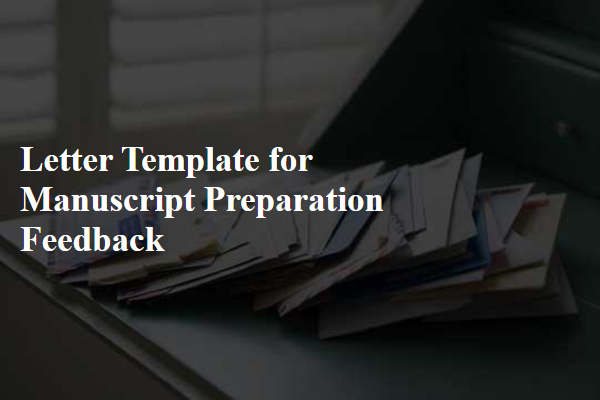
Clarity and organization of the manuscript
A well-organized manuscript enhances clarity and effectively communicates research findings, particularly within the academic publishing landscape. The structure typically includes sections such as Abstract, Introduction, Methodology, Results, Discussion, and Conclusion. Each section should follow a logical flow, with clear headings that guide the reader through the content. Engaging visuals, including graphs and tables, can illustrate key data points, making complex information more digestible. Use of concise language, precise terminology, and consistent formatting throughout is vital, as it allows for smoother reading and comprehension. Providing a clear statement of purpose early in the manuscript assists in setting the context, while a well-defined analysis allows for coherent conclusions and recommended future research directions. Overall, clarity and organization play a crucial role in the manuscript's impact on the target audience within academia.
Relevance and originality of the research
Research relevance holds paramount importance in determining the impact of a manuscript within its respective field, exemplified by studies addressing pressing global challenges like climate change or public health crises. Originality in research contributes significantly to advancing knowledge, as observed in groundbreaking work published in high-impact journals, showcasing novel methodologies or unexplored areas of study. In addition, aligning the research objectives with current trends and existing literature fosters a compelling narrative that engages readers and reviewers alike, increasing the potential for citation and further discourse. Important metrics, such as relevance to stakeholder needs and contributions to theoretical frameworks, also play a crucial role in assessing the merit of the research within the scientific community.
Adherence to journal guidelines and formatting
Manuscripts adhering to specific journal guidelines enhance the likelihood of acceptance. Compliance with formatting requirements, such as font size (typically 12 point), line spacing (usually double-spaced), and margin specifications (generally 1 inch on all sides), is crucial. Additionally, including sections like an abstract of approximately 250 words, a well-structured introduction, and a detailed methodology enhances clarity. Proper citation style, whether APA, MLA, or Chicago, must be strictly followed. Tables and figures should be appropriately numbered and captioned, with high-resolution images preferred (300 DPI minimum for photos). Ensuring references are up to date and formatted according to the journal's specific requirements, such as title case for article titles, strengthens the manuscript's credibility. Submitting files in acceptable formats like Word or LaTeX is also essential to streamline the review process.
Quality of language and grammar
Manuscript quality significantly impacts reader engagement and comprehension. Effective language use encompasses proper grammar, which includes aspects such as subject-verb agreement, correct tense usage, and punctuation accuracy. For example, a study published in the "Journal of Language and Linguistics" highlights that manuscripts with grammatical errors can lead to misinterpretations (affecting 30% of survey respondents). Additionally, clarity in writing enhances the narrative flow, facilitating a smoother reading experience. Specific attention to vocabulary choice, such as using precise terminology relevant to the field, can elevate the scholarly tone. Overall, refining language quality and grammar not only improves the manuscript's professionalism but also aids in conveying the research's significance effectively.
Accuracy of data and citation correctness
Thorough verification of data accuracy is crucial in scientific manuscripts, particularly when considering peer-reviewed publications such as those by Springer or Elsevier. Metadata, including sample sizes, statistical methods, and experimental conditions, should align with reported findings to ensure reproducibility. Attention to detail in citation correctness can affect the credibility of work, as misattributions can mislead readers. For instance, referencing studies should follow specific formatting styles required by journals (like APA or MLA), with proper in-text citations corresponding to an accurate reference list. Furthermore, the integration of DOI links ensures easy access to source material, enhancing transparency and scholarly integrity. Accurate citations not only give credit but also allow for the contextualization of research within the existing body of literature, thereby strengthening the overall impact of the manuscript.
Letter Template For Manuscript Preparation Feedback Samples
Letter template of manuscript preparation feedback for journal submission.

Letter template of manuscript preparation feedback for peer review response.
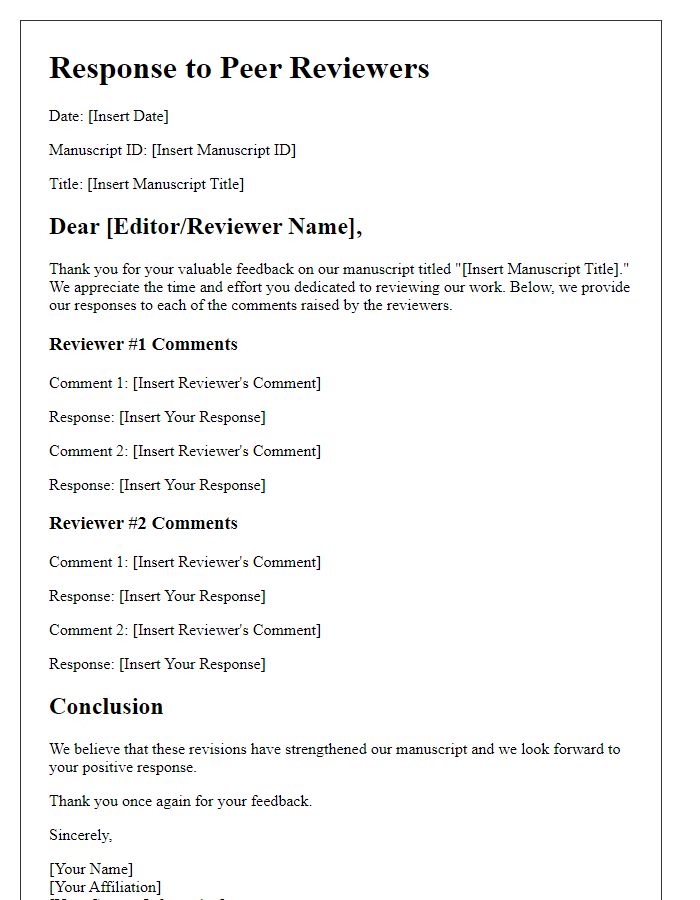
Letter template of manuscript preparation feedback for conference papers.
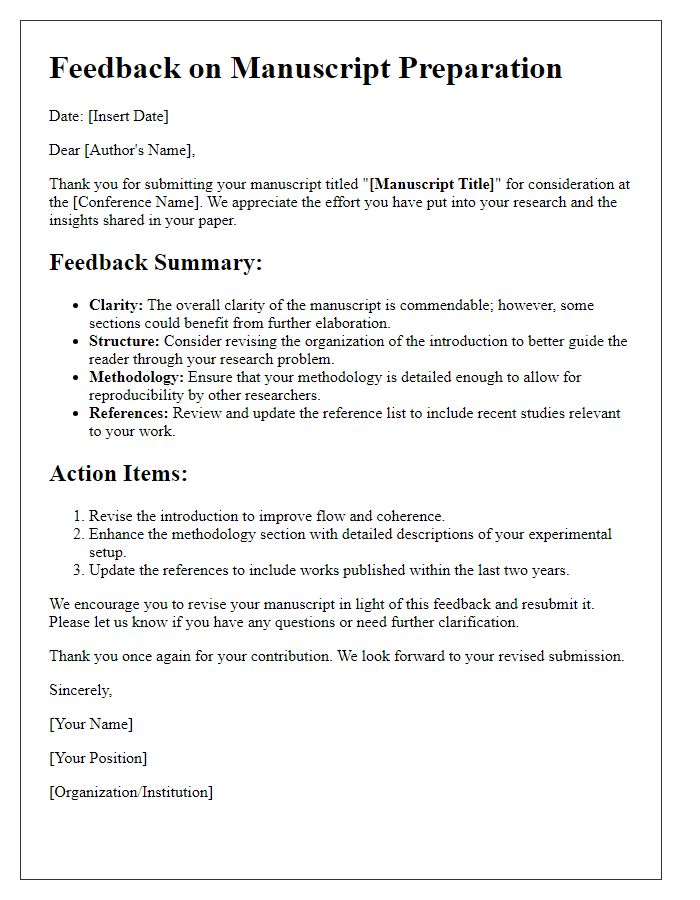
Letter template of manuscript preparation feedback for thesis submissions.
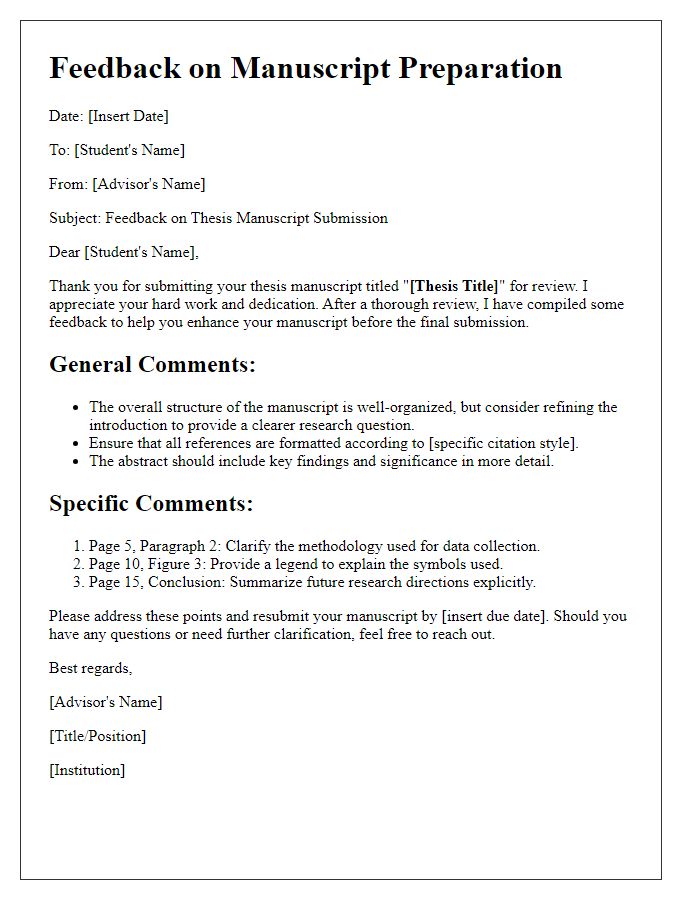
Letter template of manuscript preparation feedback for collaborative research.
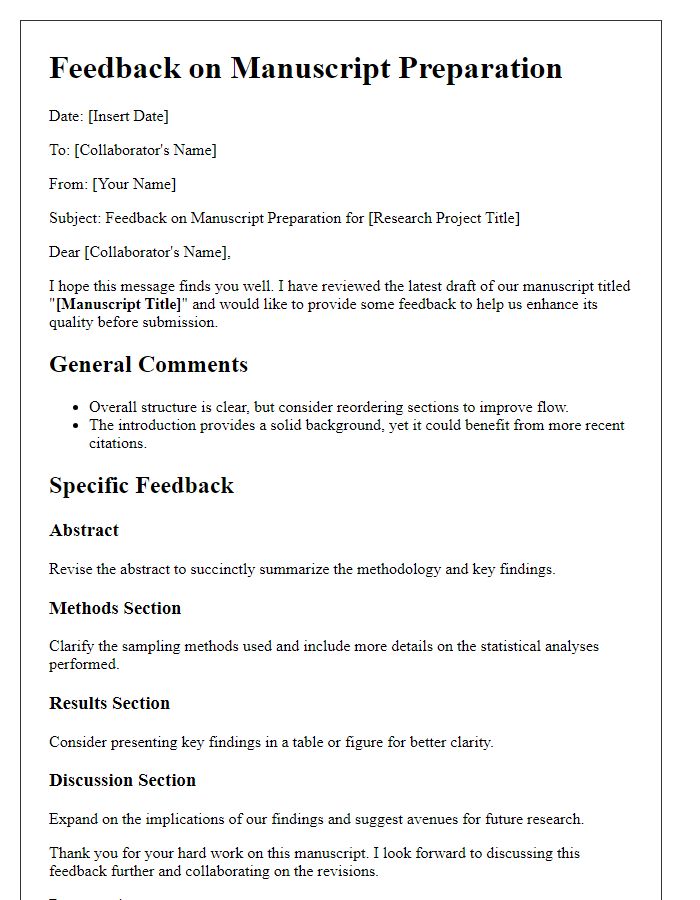
Letter template of manuscript preparation feedback for editorial review.

Letter template of manuscript preparation feedback for technical reports.
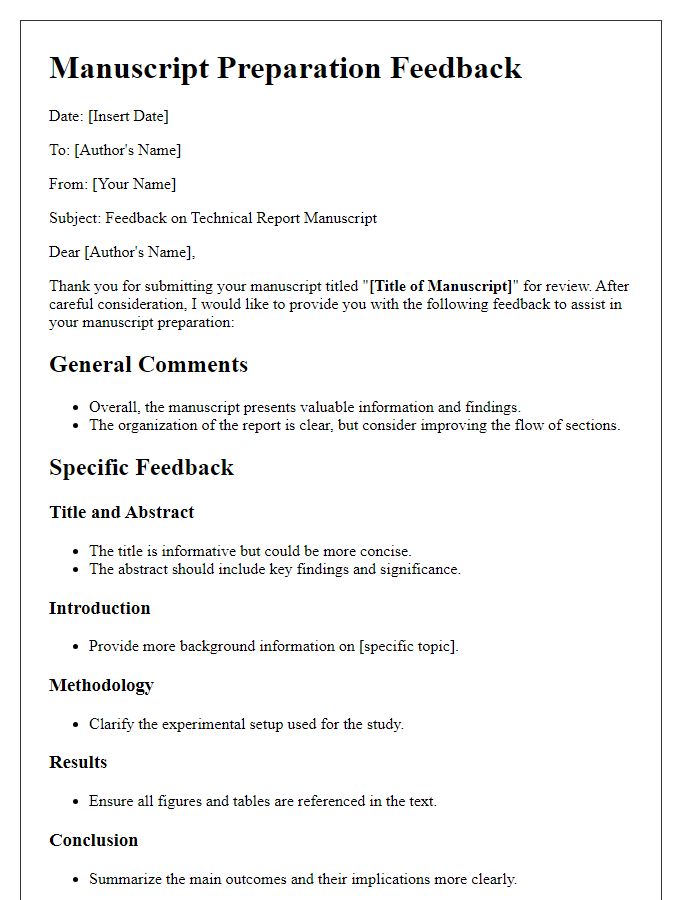


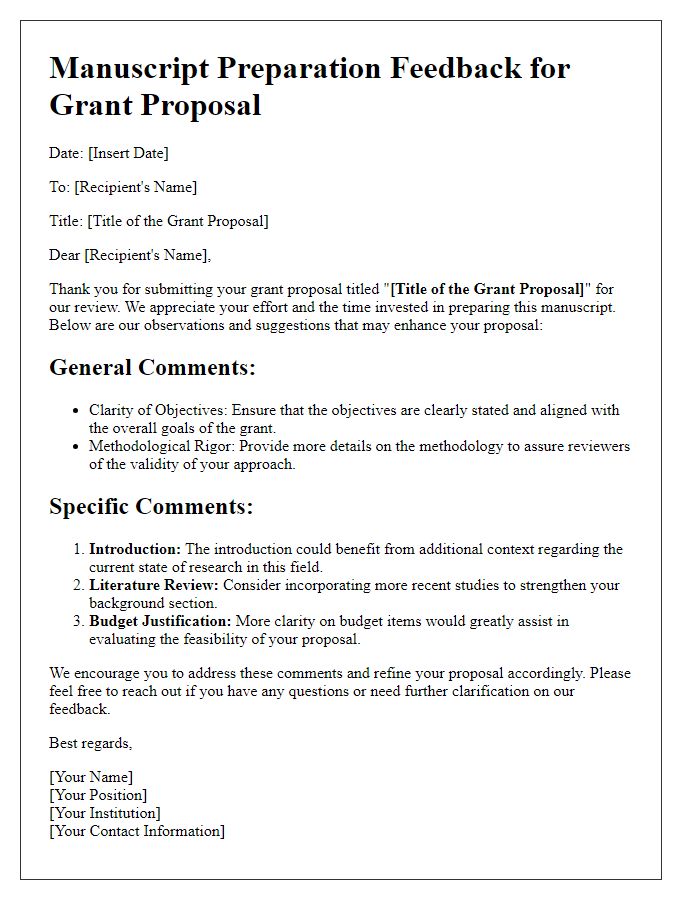
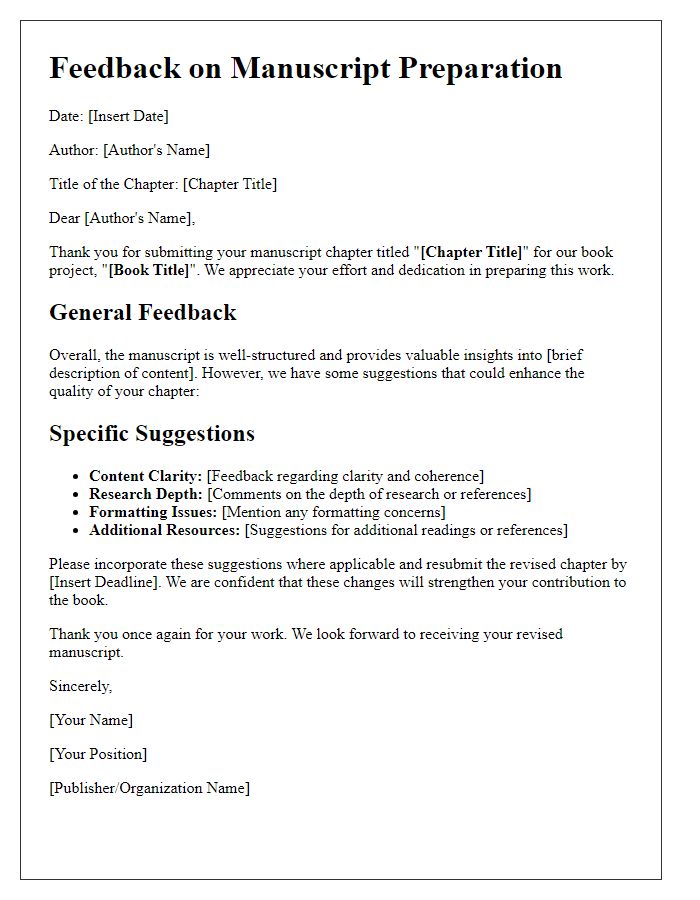


Comments